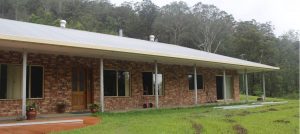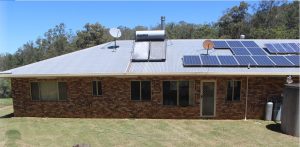Anything that is deemed “fit for purpose” must adequately do the job it was designed to do. Of course, some products are more robust than others or perform functions with less effort or more accuracy, but a product must perform its basic design function to be deemed “fit for purpose”. Around the world consumers are protected from faulty products by laws that demand that all products sold must be “fit for purpose”. An electric toaster that doesn’t toast is not “fit for purpose”. An electric toaster that toasts but cooks more on one side than the other is not a great toaster, but it does perform the design function. Not all toasters are made to the same performance standards but if they toast, they are legally “fit for purpose”.
It is not difficult to ascertain the “fit for purpose” status of simple household appliances and even industrial machinery, but what would be the performance criteria of a “fit for purpose” home? In Australia, as in other parts of the world, expected minimum standards of structural build and thermal performance of prospective new homes submitted to building authorities must meet computer modelled performance minimums before building approval is granted. But not everybody needs or wants the same things in a dwelling. So how is this regulated?
Let’s start from ground level and examine what is required in a house for it to be a “fit for purpose” family home.
A one-bedroom apartment on the 13th floor of any building complex is not a “fit for purpose” home for a family of six. A two-bedroom apartment would only be marginally better and even an apartment with a third bedroom or even a fourth bedroom may still fall short. There are several factors that need to be considered including a family’s gender ratio, age and even possible lifestyle challenges of each family member. Families can upsize and downsize homes depending on their circumstances however the reality will always be that compromises need to be made and those aspects that cause most inconvenience can only be addressed when a family has the inclination and the financial capacity to do so.
 So, what is a “fit for purpose” home for a family of six in the western world? Asking a ten-year-old of their perception of requirements on a list for a “fit for purpose” home may include a pool. At sixteen their focus may be more on a dedicated media room. Parents may have preferences as to the distance from local shops, their workplace or from schools. Whilst these factors may be desirable and all play a part in what may be a “dream home”, a family of six may well enjoy real time “fit for purpose” characteristics that are not that readily identified. Let me get into some specific and even personal detail.
So, what is a “fit for purpose” home for a family of six in the western world? Asking a ten-year-old of their perception of requirements on a list for a “fit for purpose” home may include a pool. At sixteen their focus may be more on a dedicated media room. Parents may have preferences as to the distance from local shops, their workplace or from schools. Whilst these factors may be desirable and all play a part in what may be a “dream home”, a family of six may well enjoy real time “fit for purpose” characteristics that are not that readily identified. Let me get into some specific and even personal detail.
My family is a family of five composed of my wife, our three girls and me. When the girls were young it was possible and even advantages in many ways for them to share a bedroom. All good parents plan and factor in what they anticipate the future will hold and the dynamics within the family will naturally change over time. When our kids were young, we moved from a three-bedroom, brick and tile, suburban house in the suburbs into a block shed on a multiacre property. The shed was purpose-built, not for habitation, ie not “fit for that purpose” having one security room and the rest open space. There wasn’t enough room to land a Cessna, but it was extensive, and we made little rooms in the larger expanse using our wardrobes and other furniture. The concrete and core filled block shed was home for our family for eleven months whilst our “fit for purpose” home was under construction on our property. The concrete shed was much more suitable for my family’s needs, that is, it was more “fit for purpose”, at that time than the well-established three-bedroom home that we left behind. You may ask how that could possibly be so.
We most certainly made compromises moving from a tradition house into a shed including not having a flushing toilet, no access to grid electricity and having to manually gas heat our hot water to fill a 20-litre bucket to bilge pump the water into the shower. BUT …. it was much more liveable, because …… when we moved into the shed in August 2000, although it was very basic and a little on the cool side, as the summer months approached, our “Shed House”, or what we call our “Shouse” consistently maintained comfortable internal temperatures. Even when daytime external temperatures exceeded 40 degrees C, our “Shouse” maintained ambient temperatures in the vicinity of 23 degrees C.
We could not manufacture that consistent thermal comfort in our three bedroom home even with two air conditioners running from late afternoon through the night. Frequently inside our three-bedroom home during summer, it was hotter inside the home, even with the air conditioners cranked up to eleven, than what it was outside. These uncomfortably elevated temperature levels were maintained well into the night as the tiled roof dissipated the heat in every which direction including inside the home until the internal temperatures fell to a more comfortable level. On numerous occasions sleeping was an issue with inside temperatures in the low thirties until the early hours of the morning. The house that we moved from still exists and is now someone else’s’ home. It will still thermally perform the same way it has from the day it was built. Most homes built in Australia before 2003 have a similar thermal performance profile and thanks to NatHERS, (Nation Wide House Energy Rating Scheme) they are now a “dinosaur” design no longer approved for construction in any Australian state or territory.
We moved into our owner designed and owner built home in June 2001 as winter was beginning to disappear in the rear vision mirror. We still supplied our own electricity as we had in the shed, but we upgraded from 7kWh of storage in the Shouse to 42 kWh storage in the new home. We also upgraded from a 400-watt inverter to a 2000-watt inverter capable of running our toaster, which cooked more on one side than the other, a vacuum cleaner and everything else we needed except an arc welder. Our new home was luxury with not one but two flushing toilets and real rooms with walls, but the most desirable “fit for purpose” feature was that the home was thermally liveable. Who cares if your bedroom wall is a wardrobe if the temperatures are sitting snuggly in the “sweet spot”. Our home’s design had achieved a NatHERS rating of 9 + stars. Back before turn of the century in 1999 when our home’s design was finalised, the “BERS” rating (computer modelling performance program were used to determine the thermal performance of the home’s design) only went to 9. Now, 25years later, the three “approved” NatHERS programs have been recalibrated to give a star rating out of 10. A buildings thermal performance is determined in the design stage, so its thermal performance is easily know well before it is built. Our new, now 20+ year old, “fit for purpose” home uses at least 40% less energy than the average pre 2003 Australian home with savings on heating and cooling and it is a comfortable place to be anytime of the day in every season simply by its design making it “fit for the purpose” of being a comfortable family home.
as winter was beginning to disappear in the rear vision mirror. We still supplied our own electricity as we had in the shed, but we upgraded from 7kWh of storage in the Shouse to 42 kWh storage in the new home. We also upgraded from a 400-watt inverter to a 2000-watt inverter capable of running our toaster, which cooked more on one side than the other, a vacuum cleaner and everything else we needed except an arc welder. Our new home was luxury with not one but two flushing toilets and real rooms with walls, but the most desirable “fit for purpose” feature was that the home was thermally liveable. Who cares if your bedroom wall is a wardrobe if the temperatures are sitting snuggly in the “sweet spot”. Our home’s design had achieved a NatHERS rating of 9 + stars. Back before turn of the century in 1999 when our home’s design was finalised, the “BERS” rating (computer modelling performance program were used to determine the thermal performance of the home’s design) only went to 9. Now, 25years later, the three “approved” NatHERS programs have been recalibrated to give a star rating out of 10. A buildings thermal performance is determined in the design stage, so its thermal performance is easily know well before it is built. Our new, now 20+ year old, “fit for purpose” home uses at least 40% less energy than the average pre 2003 Australian home with savings on heating and cooling and it is a comfortable place to be anytime of the day in every season simply by its design making it “fit for the purpose” of being a comfortable family home.
Get your FREE copy of “Savvy Up and Save” here >>>LEARN MORE>>>
Moreton Bay residents can access weekly tips from John on Community Radio 101.5 FM Friday Mornings at 10:10am
John Lynn
